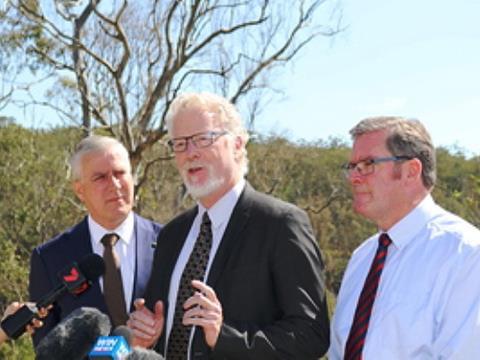
AUSTRALIA: The public-private partnership to build and maintain a key section of the Inland Rail corridor through southern Queensland was launched on October 4, at an event in Toowoomba attended by federal Infrastructure Minister and Deputy Prime Minister Michael McCormack.
Australian Rail Track Corp has invited registrations of interest in a PPP covering the financing, design and construction of the Gowrie – Kagaru section, along with maintenance for 15 to 30 years. This section of the Inland Rail corridor would take the line through the Toowoomba and Little Liverpool ranges as the railway descends to the coastal area south of Brisbane. It includes approximately 130 track-km of 1 067/1 435 mm dual-gauge line and 11 passing loops able to accommodate 1 800&bsp;m long trains.
The preferred alignment includes three major tunnels large enough to accommodate double-stack container trains: Toowoomba Range (6·4 km), Little Liverpool Range (1·1 km) and Scenic Rim (1 km) as well as 12 km of viaducts and bridges. There will be a number of road overbridges, together with the construction of new roads and realignment of existing ones, although some level crossings are envisaged. The work is expected to employ around 7 000 people at the peak of construction.
According to Inland Rail Chief Executive Richard Wankmuller, the RoI process is intended to gauge the market ahead of a formal call for expressions of interest in early 2019. ‘This is a program of national significance and ARTC is seeking a partner to deliver the most technically-challenging section’, he explained.
ARTC believes that as well as bringing in private sector finance the PPP model will attract both Australian and international firms able to propose innovative designs and more efficient construction methods. Suggesting that ‘private sector involvement is critical’, Wankmuller said ‘there is much we can learn from industry and the PPP will allow us to harness their energy, drive and excellence’.
Australasian Railway Association CEO Danny Broad said the announcement represented ‘a significant milestone in the planning and construction of this national freight rail project’, adding that completion of this ‘technically challenging’ section would be critical to the success of the whole Inland Rail project.

















